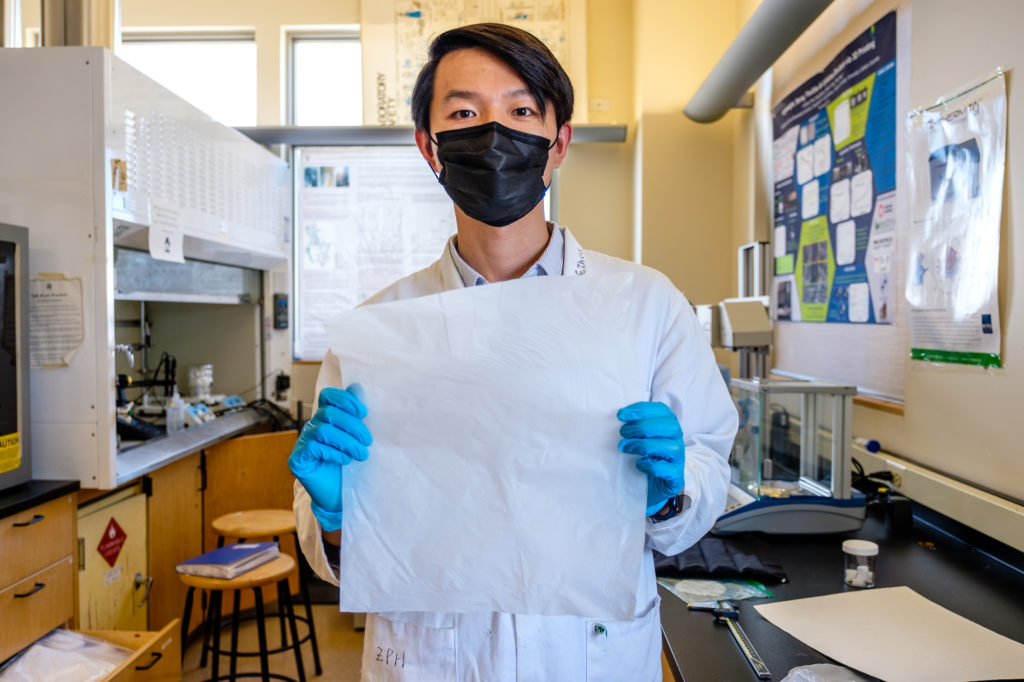
UBC researcher Dr. Feng Jiang has developed a cellulose film that looks like plastic and behaves like plastic—but is biodegradable. Dr. Jiang’s process breaks down wood fibres (sourced from forest waste) in a solution of cold sodium hydroxide combined with mild mechanical blending. The sodium hydroxide is then recycled. The result is a translucent, strong and water-resistant film.
Other researchers have also developed cellulosic films but the UBC project—funded by the Ministry of Forests, Lands, Natural Resource Operations and Rural Development—is the first to use small amounts of energy and chemicals in the manufacture.
With certain plastics taking up to a million years to decompose, single-use plastic is a massive source of pollution and it also uses significant amounts of toxic chemicals during manufacture. Dr. Jiang and his team hope to bring their film to market within a few years to offer an alternative that is environmentally friendly and marks a new use for forest byproducts.
Please visit the UBC News website to read the full story.
Through Strategy 9: Knowledge Exchange, UBC is committed to improving the university ecosystem and supporting the translation of research into action.